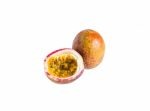Drying fruit is a traditional and widely-used method to preserve fruit for culinary purposes. It has been practiced for thousands of years, allowing for the preservation of seasonal produce and preventing food spoilage. Dried fruits are used in various culinary applications, such as snacks, baking, and savory dishes, adding sweetness, texture, and nutrition to meals. This essay delves into the various methods of drying fruit, the biochemical and physical changes that occur during the drying process, and important food safety considerations.
I. Drying Processes
There are several different techniques to dry fruit, ranging from natural drying methods to more modern mechanical processes. The method used depends on the desired quality of the dried fruit, the type of fruit, the available technology, and the environmental conditions.
1. Natural Drying Methods
Sun Drying:
Sun drying is one of the oldest and most traditional methods of drying fruit. It involves laying the fruit out in direct sunlight, typically on trays or racks, allowing the sun’s heat to evaporate the water from the fruit. This process can take several days and is often used for fruits such as grapes (raisins), apricots, figs, and plums (prunes).
- Advantages: Sun drying is energy-efficient and low-cost, as it does not require any special equipment beyond trays or racks. It is a widely accessible method, especially in areas with warm and dry climates.
- Disadvantages: The process is slow and highly dependent on weather conditions. It also exposes the fruit to potential contamination from insects, dust, and animals, so protective measures such as netting are often needed.
Air Drying:
Air drying is a variation of sun drying, usually performed in a shaded but well-ventilated environment, such as a screened-in porch or a room with good airflow. It is slower than sun drying but can be used for more delicate fruits or when conditions aren’t favorable for direct sunlight.
- Advantages: Similar to sun drying, this method is inexpensive and accessible but offers more protection from direct sunlight and contaminants.
- Disadvantages: The slow drying process requires careful monitoring and can still be affected by humidity and weather conditions.
2. Mechanical Drying Methods
Oven Drying:
Oven drying is a widely used method for small batches of fruit. The fruit is spread on baking sheets and placed in a low-temperature oven (typically between 120°F and 200°F). The oven door is kept slightly open to allow moisture to escape. This method is commonly used for fruits like apples, pears, and citrus peels.
- Advantages: Oven drying allows for a faster drying process compared to natural methods. It is also more hygienic, as the fruit is protected from external contaminants.
- Disadvantages: It can be energy-intensive, especially for prolonged drying periods, and ovens may not allow for uniform drying, which could lead to uneven texture or spoilage if parts of the fruit retain too much moisture.
Dehydrators:
Food dehydrators are specialized devices that circulate warm air evenly around the fruit to remove moisture. Dehydrators operate at low, consistent temperatures (usually around 135°F) and allow for controlled drying of fruits, ensuring a more uniform result.
- Advantages: Dehydrators provide precise control over temperature and airflow, leading to better consistency in the final product. They also allow for simultaneous drying of different types of fruit without cross-contamination.
- Disadvantages: Dehydrators require an initial investment in the equipment, and their use can be energy-consuming for large-scale drying.
Freeze Drying:
Freeze drying is a more sophisticated method that involves freezing the fruit and then placing it in a vacuum chamber where the ice sublimates, turning directly from solid to vapor without passing through the liquid phase. This results in a very light, porous texture with no moisture left in the fruit.
- Advantages: Freeze drying preserves the color, flavor, and nutrients of the fruit better than most other drying methods, resulting in a superior-quality product. The texture is unique and highly desirable for certain culinary applications, such as snacks and garnishes.
- Disadvantages: The equipment required for freeze drying is expensive and typically used in commercial production. It is not a practical option for home drying.
Microwave Drying:
Microwave drying uses microwaves to heat and evaporate water from the fruit quickly. It can be combined with other drying methods to speed up the process. However, it is primarily suitable for small-scale drying and is less commonly used for commercial purposes.
- Advantages: Microwave drying is fast and can be convenient for small batches of fruit. It can be a useful method for home use when a rapid drying process is needed.
- Disadvantages: The drying can be uneven, and the texture of the fruit may not be as desirable as with other methods. Additionally, there is a risk of overheating the fruit, leading to burning or degradation of quality.
II. Biochemical and Physical Changes During Drying
Drying fruit is not just a physical process of water removal; it also induces several biochemical and physical changes in the fruit. These changes have significant impacts on the texture, flavor, nutrition, and appearance of the fruit.
1. Water Loss
The primary transformation in drying is the removal of water. Fresh fruit is typically composed of 80% to 95% water, while dried fruit contains between 10% and 20% moisture. Removing water inhibits the growth of microorganisms such as bacteria, yeasts, and molds, effectively preserving the fruit for long-term storage.
Water loss also causes a reduction in the weight and volume of the fruit, which is advantageous for storage and transportation. However, this reduction in water can also lead to changes in the texture, making the fruit denser and more concentrated.
2. Concentration of Sugars and Flavors
As water is removed, the sugars and flavors in the fruit become concentrated, which intensifies the sweetness of the dried fruit. For example, raisins and dried dates are much sweeter than their fresh counterparts. This concentration of sugars makes dried fruit an appealing snack and ingredient in baking, where sweetness is desired.
The flavor profile of the fruit also becomes more complex due to the concentration of volatile compounds and natural acids. For some fruits, drying can enhance desirable flavor characteristics, while for others, it may lead to the development of off-flavors if the fruit is not dried properly.
3. Nutrient Retention and Loss
The drying process affects the nutritional composition of fruit. While certain nutrients, such as fiber and minerals like potassium, magnesium, and iron, are largely retained during drying, others are more vulnerable to degradation.
- Vitamin C: One of the most sensitive nutrients, vitamin C, is often significantly reduced during drying, particularly when high temperatures are used. Sun drying and oven drying tend to result in the greatest loss of vitamin C, while freeze drying is better at preserving this nutrient.
- B Vitamins: Like vitamin C, B vitamins are also heat-sensitive and may degrade during drying. Some loss is expected, especially in methods that use higher temperatures.
- Antioxidants: Some antioxidant compounds, such as polyphenols, can be retained during drying, although exposure to heat and oxygen can reduce their levels.
4. Colour Changes
Drying can lead to noticeable changes in the color of the fruit due to enzymatic browning and oxidation. Fruits like apples, bananas, and pears are particularly prone to browning when exposed to air during drying. To prevent discoloration, fruits are often pre-treated with antioxidants like ascorbic acid (vitamin C) or citric acid. Alternatively, sulfur dioxide may be used commercially to preserve the bright colors of fruits like apricots.
However, sulphur dioxide can cause adverse reactions in individuals with asthma or sulfite sensitivity, so its use is carefully regulated and must be labeled on food packaging.
5. Texture Changes
The texture of fruit changes significantly during drying. Fresh fruit is typically juicy and soft, but drying removes the moisture, leading to a firmer, chewier, or even leathery texture. For certain fruits, like figs and prunes, the drying process results in a sticky or pliable texture that is desirable for culinary uses. Freeze-dried fruits, on the other hand, retain a light, crisp texture that makes them ideal for snacking and as toppings in cereals and baked goods.
The texture of dried fruit depends not only on the drying method but also on the final moisture content. If the fruit is not dried thoroughly, residual moisture can cause it to spoil more quickly or develop a tough, rubbery consistency.
III. Food Safety Considerations
Food safety is an important concern when drying fruit, particularly with regard to preventing microbial contamination and ensuring the product remains safe for consumption. Here are the primary food safety considerations:
1. Preventing Microbial Contamination
Moisture Control:
The primary food safety concern in drying fruit is controlling the moisture content. If the fruit is not sufficiently dried, remaining moisture can allow the growth of harmful microorganisms such as bacteria, yeast, and mold. The final moisture content should typically be below 20% for dried fruit to be considered safe for storage.
Pasteurization:
For some fruits, especially those dried in uncontrolled environments like sun drying, pasteurization may be necessary to kill any harmful bacteria, molds, or insects that could have contaminated the fruit. Pasteurization involves heating the dried fruit to a specific temperature for a set period or freezing it for several days to ensure microbial safety.
2. Sulphite Use and Sensitivities
Many commercially dried fruits are treated with sulfur dioxide or other sulfites to preserve color and prevent spoilage. However, sulfites can trigger allergic reactions or asthma symptoms in sensitive individuals. Therefore, regulations require that sulfites be clearly labeled on dried fruit products, and some producers offer unsulfured alternatives for those with sensitivities.
3. Hygiene During Drying
Clean Facilities:
The drying process, particularly when done in natural environments, poses risks of contamination from dust, insects, animals, and pathogens. It’s important to use clean equipment, protective coverings, and proper sanitation practices during the drying process.
Temperature Control:
In mechanical drying methods, such as using dehydrators or ovens, controlling the temperature is crucial. Too low a temperature can promote the growth of microorganisms, while too high a temperature can degrade the quality of the fruit.
4. Storage Conditions
Proper storage is essential to ensure that dried fruit remains safe and of high quality. Dried fruits should be stored in airtight containers in cool, dark, and dry places to minimize exposure to air and moisture, which could lead to spoilage or contamination.
- Mold Growth: Even after drying, if the fruit is exposed to high humidity or is not properly sealed, it can absorb moisture from the air, leading to mold growth.
- Pest Infestation: Dried fruits are also susceptible to infestation by pests such as insects or rodents, particularly if they are stored in bulk. Airtight containers, or vacuum-sealed bags, can help prevent this issue.
Conclusion
Drying fruit for culinary purposes is a versatile and effective method of preservation that offers various benefits, from extending shelf life to enhancing flavor and providing convenient, nutritious snacks. The choice of drying method impacts the texture, flavor, and nutritional profile of the dried fruit, with each method having its advantages and limitations.
Natural drying methods, such as sun and air drying, are economical but slower and prone to contamination, while mechanical methods like dehydrators and freeze drying offer more control and consistency. However, the drying process is not without challenges; nutritional degradation, potential contamination, and the use of additives like sulfur dioxide must be managed carefully to ensure a safe and high-quality product.
Understanding the biochemical and physical changes that occur during drying, as well as adhering to proper food safety practices, ensures that dried fruit remains a valuable and delicious component of culinary creations.


Leave a Reply